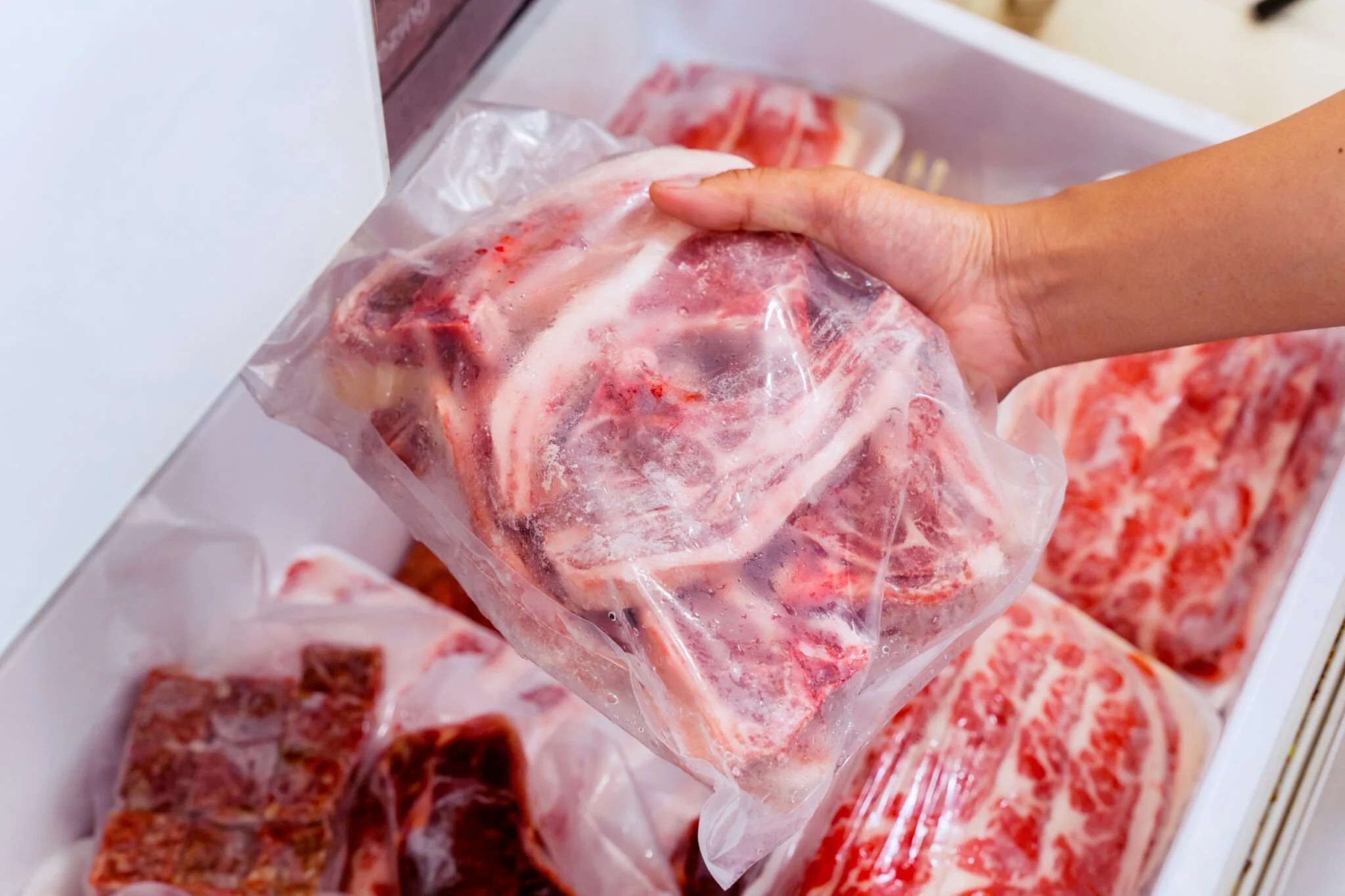

Articles
How To Store Meat
Modified: February 20, 2024
Learn effective methods for storing meat in this informative articles. Keep your meat fresh and safe with these helpful tips and techniques.
(Many of the links in this article redirect to a specific reviewed product. Your purchase of these products through affiliate links helps to generate commission for Storables.com, at no extra cost. Learn more)
Introduction
Proper meat storage is crucial to ensure the quality, safety, and longevity of your meat products. Whether you’re a professional chef or a home cook, knowing the best methods for storing meat can help you avoid spoilage, maintain flavor, and reduce the risk of foodborne illnesses. In this article, we will explore the different methods of storing meat and provide valuable tips on how to do it safely and effectively.
When it comes to meat storage, there are several options available, each with their own advantages and considerations. The most common methods include refrigeration, freezing, canning, salting, and smoking. Let’s delve into each method to understand how they can help preserve the quality of your meat.
Key Takeaways:
- Proper meat storage methods, including refrigeration, freezing, canning, salting, and smoking, are essential for maintaining freshness, flavor, and safety. Understanding temperature, packaging, and shelf life is crucial for effective meat preservation.
- Practicing safe handling techniques, utilizing the right storage containers, and implementing proper organization and rotation strategies are key to preventing cross-contamination, minimizing waste, and ensuring the safety and quality of stored meat.
Read more: How To Store A Brisket
Best Methods for Storing Meat
1. Refrigeration:
Refrigeration is the most common method for short-term meat storage. It involves storing meat at temperatures between 32°F and 40°F (0°C and 4°C). This method slows down the growth of bacteria and helps to maintain the freshness of the meat. It is important to keep the meat properly wrapped or sealed to prevent it from drying out or absorbing odors from other foods.
2. Freezing:
Freezing is an excellent long-term storage option for meat. It involves storing meat at temperatures below 0°F (-18°C). Freezing helps to preserve the quality and taste of the meat for several months or even longer. It is advisable to divide the meat into smaller portions before freezing to make it easier to thaw only what you need.
3. Canning:
Canning is a method that involves packing cooked or raw meat into jars or cans and subjecting them to heat to kill bacteria and create a vacuum seal. Canned meat can be stored at room temperature for an extended period. It is important to follow proper canning procedures and guidelines to ensure safety.
4. Salting:
Salting is an age-old method of preserving meat. It involves coating the meat with salt and allowing it to undergo a curing process. Salting helps to remove moisture from the meat, creating an inhospitable environment for bacteria and preventing spoilage. However, it is important to note that salted meat may require soaking and desalting before consumption.
5. Smoking:
Smoking is a method that combines the preservation of meat with the addition of smoky flavors. This method involves exposing the meat to smoke from burning wood or other materials at low temperatures. Smoking helps to remove moisture and inhibit bacterial growth, resulting in a distinct flavor and extended shelf life.
Each method has its benefits and considerations, and the choice of method depends on personal preference, available equipment, and the type of meat being stored. It is important to carefully consider these factors to ensure the best storage method for your specific needs.
Refrigeration
Refrigeration is a widely used method for storing meat in both commercial and residential settings. Keeping meat at a temperature between 32°F and 40°F (0°C and 4°C) helps to slow down bacterial growth and extend the shelf life of the meat.
When refrigerating meat, it is important to follow these guidelines:
- Proper Packaging: To prevent cross-contamination and maintain the quality of the meat, it should be wrapped tightly in plastic wrap, aluminum foil, or placed in a sealed container. This helps to keep the meat moist and prevent it from absorbing odors from other foods in the refrigerator.
- Storage Placement: Store meat on the lowest shelves of the refrigerator to prevent any potential leakage from contaminating other foods. It is also important to keep raw meat separate from cooked foods to avoid the risk of foodborne illnesses.
- Utilize the Cold Zones: Different areas in the refrigerator have different temperature zones. Utilize the colder zones, such as the back of the refrigerator or the lower shelf, for storing meat. These areas provide a more consistent and cooler temperature, maximizing the preservation of the meat.
- Proper Timeframes: While refrigeration can help extend the shelf life of meat, it is important to note that it is only suitable for short-term storage. Fresh meat should be consumed within a few days. If the meat is cooked, it can be stored for 3-4 days in the refrigerator.
It is important to regularly monitor the temperature of the refrigerator using a thermometer to ensure it remains within the optimal range. Additionally, it is recommended to keep the refrigerator clean and free from any spills or contaminants to maintain a safe environment for storing meat.
Refrigeration is a convenient method for storing meat, allowing for easy access and quick meal preparations. However, for long-term storage, freezing is a more suitable method.
Freezing
Freezing is a popular method for long-term meat storage. By lowering the temperature below 0°F (-18°C), freezing helps to halt bacterial growth and preserve the quality of the meat for an extended period. Here are some important considerations for freezing meat:
- Proper Packaging: To prevent freezer burn and maintain the quality of the meat, it should be properly packaged. Wrap the meat tightly in plastic wrap or aluminum foil to create an airtight seal. Alternatively, you can use freezer-safe plastic bags or containers. Make sure to remove any excess air from the packaging to minimize freezer burn.
- Division into Portions: It is advisable to divide the meat into smaller portions before freezing. This allows you to thaw only what you need, preventing unnecessary waste. Ensure that each portion is wrapped or packaged individually for easy access.
- Labeling: Properly label the packaged meat with the date of freezing to keep track of its age. This will help you ensure that you use the oldest meat first to maintain freshness and avoid any potential spoilage.
- Freezer Placement: Place the meat in the coldest part of the freezer, such as the back or the bottom shelf. This ensures a consistent temperature and minimizes temperature fluctuations that could affect the quality of the meat.
- Freezer Shelf Life: While freezing can significantly extend the shelf life of meat, it is important to note that it is not indefinite. The quality of the meat may begin to deteriorate over time. Generally, raw meat can be stored in the freezer for 3-4 months, while cooked meat can last for 2-3 months.
When thawing frozen meat, it is important to do so safely. The best method is to thaw meat in the refrigerator, allowing for a slow and controlled thawing process. If you need to thaw meat quickly, you can use a microwave or place it in a sealed plastic bag and submerge it in cold water, changing the water every 30 minutes until fully thawed.
Freezing is a convenient method for long-term meat storage, allowing you to have a stock of meat readily available at any time. By following proper packaging and storage techniques, you can ensure that the frozen meat retains its quality and flavor when thawed for consumption.
Canning
Canning is a time-tested method of preserving meat that involves sealing cooked or raw meat in jars or cans and subjecting them to heat to create a vacuum seal. This process helps to kill bacteria, inhibit spoilage, and extend the shelf life of the meat. Here’s what you need to know about canning meat:
- Selection of Meats: Choose fresh and high-quality meats for canning. Trim away excess fat, gristle, and connective tissue, as they can affect the texture and quality of the canned meat.
- Preparation: Cook the meat thoroughly before canning. This ensures that the meat is safe to consume and helps to eliminate any potential bacterial contamination. Season the meat as desired, but avoid adding thickeners or fillers that can affect the canning process.
- Proper Canning Equipment: Use canning jars that are specifically designed for pressure canning. Ensure that the jars and lids are clean and in good condition. Follow the manufacturer’s instructions for proper usage and safety.
- Pressure Canning: Canning meat requires a pressure canner to safely process the jars at the appropriate temperature. This method ensures that the meat is heated to a temperature that kills harmful bacteria, such as Clostridium botulinum, which can cause botulism. Follow the recommended processing times and pressures for the type of meat being canned.
- Storage and Shelf Life: Once the meat is canned and sealed, store the jars in a cool, dark place. Properly sealed and processed jars can be stored at room temperature for long periods. However, it is recommended to consume the canned meat within 1 to 2 years to maintain optimal quality.
It is crucial to follow proper canning procedures and guidelines to ensure the safety of canned meat. Failure to adhere to these guidelines can result in the growth of harmful bacteria and the risk of foodborne illnesses.
Canned meat provides a convenient and shelf-stable option for long-term storage. It can be used in various dishes and provides a ready-to-eat protein source during emergencies or times when fresh meat is not readily available.
Read more: How To Store Ribs
Salting
Salting is an ancient method of preserving meat that involves coating the meat with salt and allowing it to undergo a curing process. This method helps to remove moisture from the meat, creating an inhospitable environment for bacteria and preventing spoilage. Here’s what you need to know about salting meat:
- Choosing the Right Salt: Use high-quality, non-iodized salt for salting meat. Iodized salt may affect the flavor and texture of the cured meat.
- Preparation: Trim the meat of excess fat and gristle before salting. Large cuts of meat can be salted as a whole, while smaller cuts or ground meat can be mixed with the salt to ensure even distribution.
- Coating the Meat: Generously coat the meat with salt, ensuring that all sides are covered. The salt draws out moisture from the meat, helping to preserve it. You can also add herbs, spices, and other desired seasonings at this stage for added flavor.
- Curing Time: The duration of the curing process depends on the thickness and type of meat. Thinner cuts may require a few hours, while larger cuts may need several days. It is important to monitor the curing process and adjust accordingly to achieve the desired taste and texture.
- Rinsing and Drying: After the curing period, remove the excess salt from the meat by rinsing it under cold water. Pat the meat dry with paper towels to remove any remaining moisture before storage.
- Storage: Once the meat is salted and dried, store it in a cool, dry place. You can wrap the meat in cheesecloth or hang it in a well-ventilated area to allow airflow and prevent moisture buildup.
- Desalting: Before consumption, desalting may be necessary for excessively salty meat. Soak the salted meat in water for a few hours or overnight, changing the water regularly to remove excess salt.
It is important to note that salted meat should be consumed within a reasonable time frame, as it can become overly hardened and may develop an unpleasant taste over time. Additionally, salted meat may require longer cooking times compared to fresh meat.
Salting is a traditional method of meat preservation that imparts unique flavors and extends the shelf life of meat. Properly cured and stored salted meat can provide a delicious and convenient protein source for various culinary applications.
Smoking
Smoking is a preservation method that combines the benefits of curing with the addition of unique smoky flavors. This process involves exposing meat to smoke from burning wood or other materials at low temperatures. Here’s what you need to know about smoking meat:
- Choosing the Wood: Different types of wood impart distinct flavors to the meat. Popular options include hickory, mesquite, apple, cherry, and oak. Experiment with different woods to find the flavor profile that suits your taste.
- Preparation: Start with high-quality meat, trimmed of excess fat and connective tissue. You can marinate the meat beforehand to enhance its flavor and tenderness.
- Smoking Process: Set up your smoker or grill for indirect heat. Maintain a low temperature between 180°F and 250°F (82°C and 121°C) and provide a constant supply of smoke. Place the meat on the cooking grates, ensuring proper airflow around the pieces.
- Monitoring and Basting: Keep a close eye on the temperature to avoid overcooking or undercooking the meat. Baste the meat with marinades or juices periodically to keep it moist and add flavor during the smoking process.
- Internal Temperature: It is important to ensure that the smoked meat reaches the appropriate internal temperature for safe consumption. Use a meat thermometer to check the doneness of the meat. The temperature will vary based on the type of meat being smoked.
- Cooling and Storage: Once the meat is smoked and cooked to the desired level, allow it to cool before storing. Store the smoked meat in airtight containers or wrap it tightly in foil or plastic wrap. Refrigerate or freeze the smoked meat depending on your planned consumption timeframe.
- Usage of Smoked Meat: Smoked meat can be enjoyed as is or used as an ingredient in other dishes. It adds a rich, smoky flavor to soups, stews, sandwiches, and more.
Smoking meat is not only a preservation method but also a culinary technique that enhances the flavor and texture of the meat. Experimenting with different smoking woods and flavor combinations can create a wide range of delicious smoked meat options.
It is important to practice safe smoking techniques, ensuring that the meat is fully cooked and maintaining proper hygiene throughout the smoking process.
Factors to Consider for Proper Meat Storage
When it comes to storing meat, there are several factors that need to be considered to ensure its quality, safety, and longevity. Paying attention to these factors will help you maintain the freshness of your meat and reduce the risk of spoilage and foodborne illnesses. Here are some important factors to consider:
- Temperature: The temperature at which meat is stored plays a significant role in its shelf life. Both refrigeration and freezing require specific temperature ranges. In the refrigerator, keep the temperature between 32°F and 40°F (0°C and 4°C). For long-term storage, freezing requires temperatures below 0°F (-18°C). Make sure your refrigerator and freezer are set to the appropriate temperatures and regularly monitor them to ensure optimal conditions.
- Packaging: Proper packaging is crucial for maintaining the quality of the meat. It helps prevent exposure to air, moisture, and potential contaminants. Use airtight containers, plastic wrap, aluminum foil, or freezer-safe bags to package the meat. Ensure that the packaging is intact and properly sealed to minimize the risk of freezer burn and microbial contamination.
- Labeling: Properly labeling your stored meat is essential for organizational purposes and to keep track of its age. Labeling should include the type of meat, date of storage, and any other relevant information. This allows you to easily identify and use the oldest meat first to avoid waste and ensure freshness.
- Shelf Life: Understanding the shelf life of different types of meat is crucial for proper storage. Fresh meat, such as beef, poultry, and fish, should be consumed within a few days when refrigerated. Cooked meat can last for 3-4 days in the refrigerator. When frozen, the shelf life of meat can be extended significantly, ranging from a few months to over a year, depending on the type and cut.
- Quality of Meat: The quality of the meat at the time of purchase or processing also affects its storage life. Proper handling and storage from the source are essential. Choose meat that is fresh, properly stored, and of high quality to ensure better results in terms of taste, texture, and longevity.
By considering these factors and implementing appropriate storage practices, you can effectively preserve the quality of your meat and minimize waste. It is important to stay vigilant and regularly inspect your stored meat for any signs of spoilage, such as a foul odor, slimy texture, or unusual coloration. When in doubt, it is always safer to discard questionable meat to prioritize food safety.
Temperature
The temperature at which meat is stored is a crucial factor in preserving its quality, safety, and shelf life. Proper temperature control is essential to slow down the growth of bacteria and prevent spoilage. Here’s what you need to know about the role of temperature in meat storage:
Refrigeration:
When storing meat in the refrigerator, it is important to maintain a temperature between 32°F and 40°F (0°C and 4°C). These temperatures are considered the “safe zone” for perishable foods, including meat. At this temperature range, bacterial growth is slowed down, helping to maintain the freshness of the meat for a longer period.
It is crucial to have an accurate thermometer to monitor the temperature of your refrigerator regularly. A fluctuation in temperature, even within the safe zone, can affect the quality and safety of the stored meat. Keeping the refrigerator clean and organized is also important to prevent cross-contamination and maintain proper airflow.
Freezing:
Freezing meat is an excellent method for long-term storage. To freeze meat properly, the temperature should be set below 0°F (-18°C). At this temperature, microbial activity is halted, effectively preserving the meat for an extended period.
It is essential to freeze meat as quickly as possible after purchase or preparation to maintain its quality. Slow freezing can lead to the formation of large ice crystals, which can cause cell damage and affect the texture of the meat. To ensure rapid freezing, place the meat in a single layer on a tray or use vacuum-sealed freezer bags.
When thawing frozen meat, do so in the refrigerator to ensure a slow and controlled thawing process. Avoid thawing meat on the counter at room temperature, as it can lead to uneven thawing and promote the growth of bacteria.
Other Considerations:
It is important to note that certain meats have specific temperature requirements for optimal storage. For example, poultry and ground meat are generally more susceptible to bacterial growth and require stricter temperature control compared to cuts of beef or pork.
In addition to refrigeration and freezing, it is crucial to consider the temperature during transportation and handling. Meats should be kept at safe temperatures during transportation from the store to your home. When shopping for meat, it is advisable to pick up meat products near the end of your shopping trip to minimize the time the meat spends outside safe temperature ranges.
Proper temperature control is a critical aspect of meat storage. By following the recommended temperature ranges and adopting safe storage practices, you can ensure that your meat stays fresh, safe for consumption, and maintains its quality for an extended period.
Read more: How To Store Brisket
Packaging
The packaging of meat plays a crucial role in preserving its quality, preventing contamination, and extending its shelf life. Proper packaging helps to maintain the freshness, flavor, and texture of the meat, and also protects it from exposure to air, moisture, and potential contaminants. Here are some important considerations for packaging meat:
- Airtight Seal: It is essential to ensure an airtight seal when packaging meat. This helps to prevent the loss of moisture, which can lead to dryness and deterioration of the meat. Whether using plastic wrap, aluminum foil, or airtight containers, make sure to wrap or seal the meat tightly, eliminating any air gaps.
- Freezer-Safe Materials: When storing meat in the freezer, it is important to use freezer-safe packaging materials. Freezer-safe plastic bags or containers help to prevent freezer burn and protect the meat from exposure to cold air. Ensure that the packaging is made specifically for freezer use to maintain the quality of the meat.
- Individual Portioning: Dividing the meat into individual portions before packaging can be beneficial. This allows you to thaw only the amount you need, reducing waste and ensuring that the remaining meat remains properly stored. It is advisable to wrap each portion separately to maintain freshness and prevent cross-contamination.
- Double Wrapping: For added protection, consider double wrapping the meat. This involves wrapping the meat in a layer of plastic wrap or foil, and then placing it in a freezer-safe bag or container. Double wrapping helps to provide an extra barrier against moisture and helps to prevent freezer burn.
- Labeling: Proper labeling is crucial for easy identification and organization. Label each packaged meat with the type of meat, cut, and date of packaging. This allows you to track the age of the meat and ensures that you use the oldest meat first to maintain freshness. Include any additional information, such as seasoning or marinade used, if desired.
- Preventing Cross-Contamination: When packaging raw meat, it is important to prevent cross-contamination with other foods. Avoid placing raw meat near ready-to-eat foods to minimize the risk of spreading harmful bacteria. Use separate packaging materials or ensure proper separation within the refrigerator or freezer.
Proper packaging of meat helps to maintain its quality, prevent spoilage, and reduce the risk of foodborne illnesses. By following these packaging guidelines, you can ensure that your meat stays fresh, safe to consume, and retains its flavor and texture for an extended period of time.
Store raw meat in the coldest part of the fridge, ideally below 40°F (4°C). Keep it in its original packaging or rewrap in plastic wrap and use within a few days or freeze for longer storage.
Labeling
Proper labeling of meat is an important aspect of meat storage that helps ensure organization, track freshness, and promote food safety. By labeling your meat correctly, you can easily identify and manage your inventory, effectively rotate your supplies, and maintain the quality of your meat. Here are some key considerations for labeling:
- Type of Meat: Clearly indicate the type of meat on the label. Whether it is beef, chicken, pork, or any other variety, labeling the specific type helps prevent confusion and ensures you can quickly identify the meat you need.
- Cut or Form: In addition to the type of meat, indicate the specific cut or form of the meat. Whether it’s a whole roast, ground meat, steaks, or individual portions, including this information allows for efficient meal planning and preparation.
- Date of Packaging: Label each package with the date of packaging. This is crucial for tracking the age of the meat and ensuring you rotate your supplies properly. Using the oldest meat first helps maintain freshness and reduce waste.
- Seasonings or Marinades: If you have seasoned or marinated the meat before packaging, note the specific seasonings or marinades used on the label. This information can be helpful for meal planning and allows you to easily identify different flavor profiles.
- Storage Instructions: Include any specific storage instructions on the label. For example, if the meat should be stored in the refrigerator or freezer, or if there are any additional steps to follow for optimal storage, it is important to note them on the label.
- Special Instructions or Allergens: If there are any special instructions or allergen information related to the meat, make sure to include it on the label. This can help prevent any potential health risks and ensure that consumers are aware of any specific dietary considerations.
- Container Identification: If you are using multiple containers for storing meat, it may be helpful to assign each container a unique identifier or number. This can aid in tracking inventory and locating specific pieces of meat when needed.
Proper labeling is essential when it comes to meat storage. It promotes organization, helps you track the freshness of your meat, and ensures that you can easily access the desired cuts or types of meat. By incorporating clear and informative labels, you can efficiently manage your meat inventory and maintain the quality and safety of your stored meat.
Shelf Life
Understanding the shelf life of meat is crucial for proper storage and consumption. The shelf life refers to the length of time that meat can be stored before it begins to deteriorate in quality, flavor, and safety. By knowing the expected shelf life of different types of meat, you can plan your meals effectively and minimize waste. Here are some key considerations regarding the shelf life of meat:
- Fresh Meat:
- Cooked Meat:
- Frozen Meat:
- Monitoring Quality:
Fresh meat, such as beef, pork, lamb, chicken, and fish, should be consumed within a certain timeframe to ensure peak freshness and safety. It is recommended to consume fresh meat within a few days of purchase or packaging, depending on the specific type and cut. Factors such as storage temperature, handling, and the initial quality of the meat can affect its shelf life. Store fresh meat in the refrigerator at a temperature between 32°F and 40°F (0°C and 4°C) and use it as soon as possible for optimal quality.
Cooked meat generally has a shorter shelf life compared to fresh meat. It is advisable to consume cooked meat within 3-4 days if stored in the refrigerator. Properly store cooked meat in airtight containers or wrap it tightly with plastic wrap or foil to maintain its quality and prevent cross-contamination. If you have cooked meat that you are unable to consume within the recommended time frame, freezing it can help extend its shelf life.
Freezing is an effective method for prolonging the shelf life of meat. When properly frozen, meat can maintain its quality for an extended period. The length of time meat can be stored in the freezer before noticeable changes in taste and texture vary depending on the type of meat and whether it is raw or cooked. As a general guideline, raw meat can be stored in the freezer for 3-4 months, while cooked meat can last for 2-3 months. Use proper packaging techniques, such as airtight wrapping or freezer-safe containers, to prevent freezer burn and maintain the quality of the meat.
While these are general guidelines for the shelf life of meat, it is important to regularly inspect your stored meat for any signs of spoilage. Pay attention to the appearance, texture, and smell of the meat. If you notice any unusual odor, sliminess, discoloration, or other signs of spoilage, it is best to discard the meat to avoid the risk of foodborne illnesses.
Remember that these guidelines are meant to serve as general recommendations. The actual shelf life of meat can vary depending on various factors, including storage conditions and the specific type and quality of the meat. It is always important to use your judgment and prioritize food safety when consuming stored meat.
Tips for Safe Meat Storage
Proper meat storage is essential for maintaining the quality, safety, and taste of your meat products. By following these tips, you can ensure that your meat stays fresh, minimize the risk of foodborne illnesses, and reduce waste. Here are some important tips for safe meat storage:
- Proper Handling Techniques: When handling meat, it is important to practice good hygiene. Wash your hands thoroughly with soap and water before and after handling raw meat to prevent the spread of bacteria. Use separate cutting boards and utensils for raw and cooked meat to avoid cross-contamination.
- Storage Containers: Choose appropriate storage containers for your meat. Opt for airtight containers, freezer-safe bags, or plastic wrap to maintain freshness and prevent exposure to air and moisture. Ensure that the containers are clean and in good condition to prevent any potential leaks or contamination.
- Organization: Keep your refrigerators and freezers organized to maximize space and maintain proper airflow. Store meat in the coldest part of the refrigerator or freezer, typically the back or bottom shelves, to ensure consistent temperatures. Proper organization makes it easier to access and rotate your meat supplies, using the oldest meat first.
- Rotation: Implement a “first in, first out” system to ensure that you use the oldest meat before it reaches its expiration date. When adding new meat to your storage, place it behind the older meat to ensure proper rotation and minimize waste.
- Avoiding Cross-Contamination: Prevent cross-contamination by keeping raw meat separated from other foods. Use separate storage containers or place raw meat in sealed plastic bags to prevent any potential drips or leaks from contaminating other items in the refrigerator or freezer. Place raw meat on lower shelves to prevent any drips onto ready-to-eat foods.
- Proper Storage Times: Adhere to recommended storage times for different types of meat. Follow the guidelines for refrigeration and freezing to ensure freshness and minimize the risk of bacterial growth. Be conscious of expiration dates and use your stored meat accordingly.
- Regularly Monitor Temperature: Keep a thermometer in your refrigerator and freezer to monitor and maintain proper temperatures. Regularly check and record the temperatures to ensure optimal storage conditions for your meat.
- Safe Thawing: If you need to thaw frozen meat, do so safely. The refrigerator is the safest method for slow thawing. Plan ahead and place frozen meat on a tray in the refrigerator to thaw gradually. Alternatively, you can use the defrost setting of your microwave or thaw it in a sealed plastic bag in cold water, changing the water every 30 minutes until fully thawed.
- Regularly Clean and Maintain: Regularly clean your refrigerator and freezer to prevent any spills or buildup that could lead to bacterial growth. Follow the manufacturer’s instructions for cleaning and maintenance to ensure optimal performance and safety.
By following these tips, you can ensure safe and proper meat storage. Prioritize food safety, proper hygiene, and organization to maintain the quality and freshness of your meat, minimize waste, and enjoy delicious meals with peace of mind.
Read more: How To Store Fish
Proper Handling Techniques
Proper handling of meat is crucial to ensure food safety and prevent the spread of bacteria and other harmful pathogens. By following these tips, you can minimize the risk of foodborne illnesses and maintain the quality and freshness of your meat:
- Hand Hygiene: Wash your hands thoroughly with soap and water before and after handling raw meat. This helps remove any potential bacteria or contaminants from your hands.
- Separate Cutting Boards and Utensils: Use separate cutting boards and utensils for raw meat and other food items, such as fruits and vegetables. This prevents cross-contamination and reduces the risk of spreading harmful bacteria. Consider using color-coded cutting boards to easily distinguish between different types of ingredients.
- Clean and Sanitize: Clean and sanitize all surfaces, including countertops, cutting boards, and utensils, after coming into contact with raw meat. Use hot, soapy water and a sanitizing solution to ensure thorough cleaning.
- Prevent Drips and Spills: When handling raw meat and its packaging, be mindful of preventing any drips or spills. This can help avoid the spread of bacteria onto other surfaces and foods.
- Use Safe Storage Containers: Store raw meat in leak-proof containers or sealed plastic bags to prevent any potential cross-contamination with other foods. Ensure that the containers are in good condition and can be tightly sealed to keep the meat fresh and safe.
- Refrigerate Promptly: Refrigerate raw meat promptly after purchase or preparation. Bacteria can multiply rapidly at room temperature, so it is crucial to store meat in the refrigerator at temperatures below 40°F (4°C) to slow bacterial growth.
- Proper Thawing Techniques: Thaw frozen meat safely to avoid bacterial growth. The best method is to thaw in the refrigerator. Alternatively, you can use the defrost setting on the microwave or thaw in a sealed plastic bag in cold water, changing the water every 30 minutes. Avoid thawing meat at room temperature, as it allows bacteria to multiply.
- Cook Meat to Proper Temperatures: Ensure that you cook meat to the appropriate internal temperature to kill any harmful bacteria. Use a meat thermometer to check the doneness of the meat: 145°F (63°C) for whole cuts of beef, pork, lamb, and veal; 160°F (71°C) for ground meat; and 165°F (74°C) for poultry.
- Prevent Cross-Contamination in the Kitchen: Avoid using the same cutting board or utensils for raw meat and other ingredients without washing them thoroughly in between. Keep raw meat separate from ready-to-eat foods, and be cautious of any contact between them to prevent cross-contamination.
By following proper handling techniques, you can mitigate the risk of foodborne illnesses and maintain the safety and quality of your meat. Practicing good hygiene, separating raw meat from other foods, and implementing proper cleaning and sanitizing practices are essential for safe and enjoyable meals.
Storage Containers
Choosing the right storage containers for your meat is essential for maintaining its quality, preventing contamination, and extending its shelf life. By using proper storage containers, you can ensure that your meat stays fresh, organized, and safe for consumption. Here are some important considerations when selecting storage containers for meat:
- Type of Container: Opt for containers that are suitable for storing food. Look for containers made of food-safe materials, such as BPA-free plastic, tempered glass, or stainless steel. These materials are durable, non-reactive, and do not leach harmful chemicals into the food.
- Airtight Seal: Choose containers with a tight-fitting and secure lid to create an airtight seal. This helps prevent air, moisture, and unwanted odors from entering the container, keeping the meat fresh and minimizing the risk of spoilage.
- Leak-Proof Design: Ensure that the containers are leak-proof to prevent any liquids or juices from raw meat from spilling and contaminating other foods or the refrigerator or freezer. This is especially important when storing raw meat that may release juices during storage.
- Freezer-Safe: If you plan to freeze meat, make sure the containers are freezer-safe. Not all storage containers can withstand the low temperatures of the freezer, which can cause them to crack or warp. Look for containers specifically labeled as freezer-safe to ensure they can withstand the freezing temperatures without compromising their structure.
- Size and Shape: Choose containers that are appropriate in size and shape for your meat. It is advisable to choose containers that are slightly larger than the meat to provide enough space for expansion when freezing. Rectangular or square-shaped containers are often more space-efficient and easier to stack in the refrigerator or freezer.
- Easy to Clean: Look for containers that are easy to clean and dishwasher-safe. Proper cleaning and sanitizing of storage containers is crucial to prevent bacterial contamination and maintain food safety. Containers with smooth surfaces and removable seals are often easier to clean and maintain.
- Label-Friendly: Consider using containers that have a designated area for labeling. This allows you to easily identify the contents, storage dates, and any other necessary information. Labeling your containers helps with organization and ensures you use the oldest meat first.
- Multipurpose Use: Versatility in storage containers is always beneficial. Look for containers that can be used not only for storing meat but also for reheating, serving, and transporting. This helps save space and reduces the need for multiple different containers.
Selecting appropriate storage containers plays a significant role in maintaining the quality and safety of your meat. By considering factors such as airtightness, durability, and freezer compatibility, you can ensure that your meat remains fresh, well-organized, and protected from any potential contaminants.
Organization
Proper organization of your meat storage is essential for efficient meal planning, easy access to ingredients, and maintaining the quality and freshness of your meat. By implementing effective organization strategies, you can maximize space, prevent cross-contamination, and minimize waste. Here are some tips for organizing your meat storage:
- Categorize by Type: Group similar types of meat together. Keep different types of meat, such as beef, poultry, pork, and seafood, in separate areas or sections to prevent cross-contamination and make it easier to find specific ingredients when needed.
- Use Clear Containers or Labels: Use clear storage containers or label them with the type of meat and storage date. Clear containers allow you to easily see the contents, while labels help you quickly identify and rotate your meat supplies. Ensure that the labels are visible and easy to read.
- Utilize Proper Shelving: Utilize the shelves in your refrigerator or freezer to their maximum potential. Adjust the shelves as needed to accommodate different sizes of meat packages. Keep heavier items towards the bottom and lighter items on top to avoid any accidents or spills.
- First In, First Out (FIFO) Method: Practice the FIFO method to ensure that you use the oldest meat first. When adding fresh meat to your storage, place it behind the existing meat to ensure that the older meat is used before it reaches its expiration date. This helps prevent food waste and ensures freshness.
- Stacking and Storage Containers: If space allows, stack storage containers with proper lids to save space and keep your refrigerator or freezer organized. Stack containers of the same type of meat together, making sure that the lids are secure and the containers are stable.
- Separate Raw and Cooked Meat: Keep raw meat separate from cooked meat to prevent cross-contamination. Store each type of meat in separate containers or clearly separate them within the refrigerator or freezer. This reduces the risk of bacteria spreading from raw meat to cooked food.
- Regular Cleaning: Regularly clean the storage area, shelves, and containers to maintain hygiene. Remove any spills or expired meat promptly to prevent the growth of bacteria or unpleasant odors. Empty out and clean the storage area regularly to keep it fresh and free from any potential contaminants.
- Inventory Management: Keep track of your meat inventory to prevent any waste or running out of essential ingredients. Take a moment to assess your meat supplies regularly and create a grocery list based on what needs to be replenished. This helps ensure that you always have the necessary ingredients on hand.
By implementing proper organization techniques, you can create a well-structured and efficient meat storage area. This allows for easy access, reduces the risk of cross-contamination, and ensures that your meat stays fresh and safe for consumption.
Rotation
Effective rotation of your meat supplies is crucial for maintaining freshness, minimizing food waste, and ensuring food safety. By implementing a rotation system, you can use your meat in the order it was purchased or stored, reducing the risk of spoilage and maintaining optimal quality. Here are some tips for proper rotation of your meat:
- First In, First Out (FIFO) Method: Follow the FIFO method to use the oldest meat first. When adding new meat to your storage, place it behind the existing meat to ensure that the older meat is used before it reaches its expiration date. This helps prevent any meat from being forgotten or left unused for an extended period.
- Date Labeling: Clearly label your meat packages with the date of purchase or storage. Use a marker or labels to indicate the date on each package. This makes it easier to identify the oldest meat and use it in a timely manner.
- Organized Storage: Keep your meat storage area organized to easily access and identify the different dates of meat. Group similar meats together and stack or arrange them in a way that allows for clear visibility of the labels and easy retrieval. Consider using clear storage containers or transparent bags to easily see the meat and its corresponding date.
- Regular Inventory Assessment: Take stock and assess your meat inventory regularly. Check the expiration dates and condition of each package to identify any meat that needs to be used promptly. Plan your meals accordingly to utilize the meat that is closest to its expiration date.
- Meal Planning: Incorporate meal planning into your rotation system. Plan your meals based on the meats that need to be used soonest. This will help you utilize the older meat before it reaches its expiration date and ensure that none of your meat goes to waste.
- Proper Storage: Follow proper storage guidelines to maintain the freshness and quality of your meat. Ensure that your refrigerator or freezer is set to the appropriate temperature for meat storage and that meat is properly packaged and sealed to prevent air or moisture exposure. This helps to extend the shelf life and maintain the integrity of the meat.
- Stay Conscious of Expiration Dates: Pay close attention to the expiration or use-by dates on meat packaging. Use the recommended timeframe as a guide, but also trust your senses. If the meat looks or smells off, it’s best to discard it, even if it’s within the expiration date.
By implementing a proper rotation system, you can effectively manage your meat inventory, reduce waste, and ensure that you are consuming meat at its peak freshness. Remember to regularly assess your meat supplies, plan meals accordingly, and properly store and label your meat to maintain its quality and safety.
Read more: How To Store Salmon
Avoiding Cross-Contamination
Avoiding cross-contamination is crucial when handling and storing meat to prevent the spread of harmful bacteria and ensure food safety. Cross-contamination can occur when pathogens from raw meat come into contact with other foods or surfaces, leading to the risk of foodborne illnesses. By following these tips, you can effectively prevent cross-contamination:
- Separate Cutting Boards and Utensils: Use separate cutting boards and utensils for raw meat and other food items, such as produce or cooked food. This prevents the transfer of bacteria from raw meat to other ingredients and reduces the risk of cross-contamination. Consider using color-coded cutting boards to easily distinguish between different types of ingredients.
- Proper Cleaning and Sanitizing: After coming into contact with raw meat, thoroughly clean and sanitize all surfaces, cutting boards, and utensils. Use hot, soapy water to clean, and consider using a sanitizing solution to ensure any remaining bacteria are eliminated.
- Storage Separation: Store raw meat in separate containers or sealed plastic bags to prevent any potential drips or leaks from contaminating other foods in the refrigerator or freezer. Consider placing raw meat on lower shelves or in designated compartments to prevent cross-contamination through drips and spills.
- Proper Packaging: Properly package raw meat to prevent any contact with other foods. Use airtight containers, sealed plastic bags, or wrap meat tightly in plastic wrap or aluminum foil to contain any potential juices or bacteria. Ensure that there are no rips or tears in the packaging that could lead to leaks or cross-contamination.
- Safe Handling Order: When preparing meals, handle raw meat separately from other ingredients. If you need to handle other ingredients after handling raw meat, wash your hands thoroughly and sanitize any surfaces or utensils that came into contact with the raw meat before further food preparation.
- Proper Storage Placement: Store raw meat on lower shelves in the refrigerator to prevent any potential contamination from drips or leaks onto ready-to-eat foods. Keep raw meat separate from foods that will not undergo further cooking to avoid the consumption of any pathogens that may still be present in the raw meat.
- Practice Safe Thawing: When thawing frozen meat, do so in the refrigerator or use the defrost function on your microwave. Avoid thawing meat at room temperature, as it promotes bacterial growth. If using the cold water method, place the meat in a sealed bag and change the water every 30 minutes to prevent cross-contamination.
- Proper Cooking: Thoroughly cook meat to the recommended internal temperature to destroy any bacteria or pathogens that may be present. Use a meat thermometer to ensure the meat is cooked to a safe temperature: 145°F (63°C) for whole cuts of beef, pork, lamb, and veal; 160°F (71°C) for ground meat; and 165°F (74°C) for poultry.
By following these guidelines and adopting safe handling practices, you can prevent cross-contamination and minimize the risk of foodborne illnesses. Prioritize food safety, practice proper hygiene, and properly separate, clean, and store your meat to ensure the safety and quality of your meals.
Conclusion
Proper meat storage is essential for maintaining the quality, freshness, and safety of your meat. By employing the best methods for storing meat, considering factors such as temperature, packaging, and shelf life, you can extend the longevity of your meat and reduce the risk of spoilage and foodborne illnesses.
Refrigeration allows for short-term storage, keeping meat at temperatures between 32°F and 40°F (0°C and 4°C). Freezing is ideal for long-term storage, with temperatures below 0°F (-18°C). Canning, salting, and smoking are additional methods that provide unique flavors and preservation qualities for different types of meat.
Factors such as temperature, packaging, labeling, and shelf life should be taken into account for proper meat storage. It is necessary to store meat at appropriate temperatures, whether refrigeration or freezing, and ensure airtight packaging to maintain freshness and prevent contamination. Regularly monitoring and rotating your meat supplies while paying attention to proper handling techniques will help maximize quality and minimize waste.
By following safe meat storage practices, including proper handling techniques, using the correct storage containers, and organizing and rotation, you can ensure the safety, freshness, and deliciousness of your meat. Avoiding cross-contamination through careful separation and cleaning practices is essential for maintaining food safety in your kitchen.
Remember to regularly assess your meat inventory, plan meals accordingly, and use the oldest meat first. Stay vigilant in maintaining proper storage temperatures, cleanliness, and labeling to ensure the highest standards of food safety and quality.
By implementing these guidelines and tips, you can confidently store and enjoy your meat, knowing that it is protected, fresh, and safe for consumption. Take pride in properly handling and storing your meat, and enjoy the delicious results in your meals.
Frequently Asked Questions about How To Store Meat
Was this page helpful?
At Storables.com, we guarantee accurate and reliable information. Our content, validated by Expert Board Contributors, is crafted following stringent Editorial Policies. We're committed to providing you with well-researched, expert-backed insights for all your informational needs.
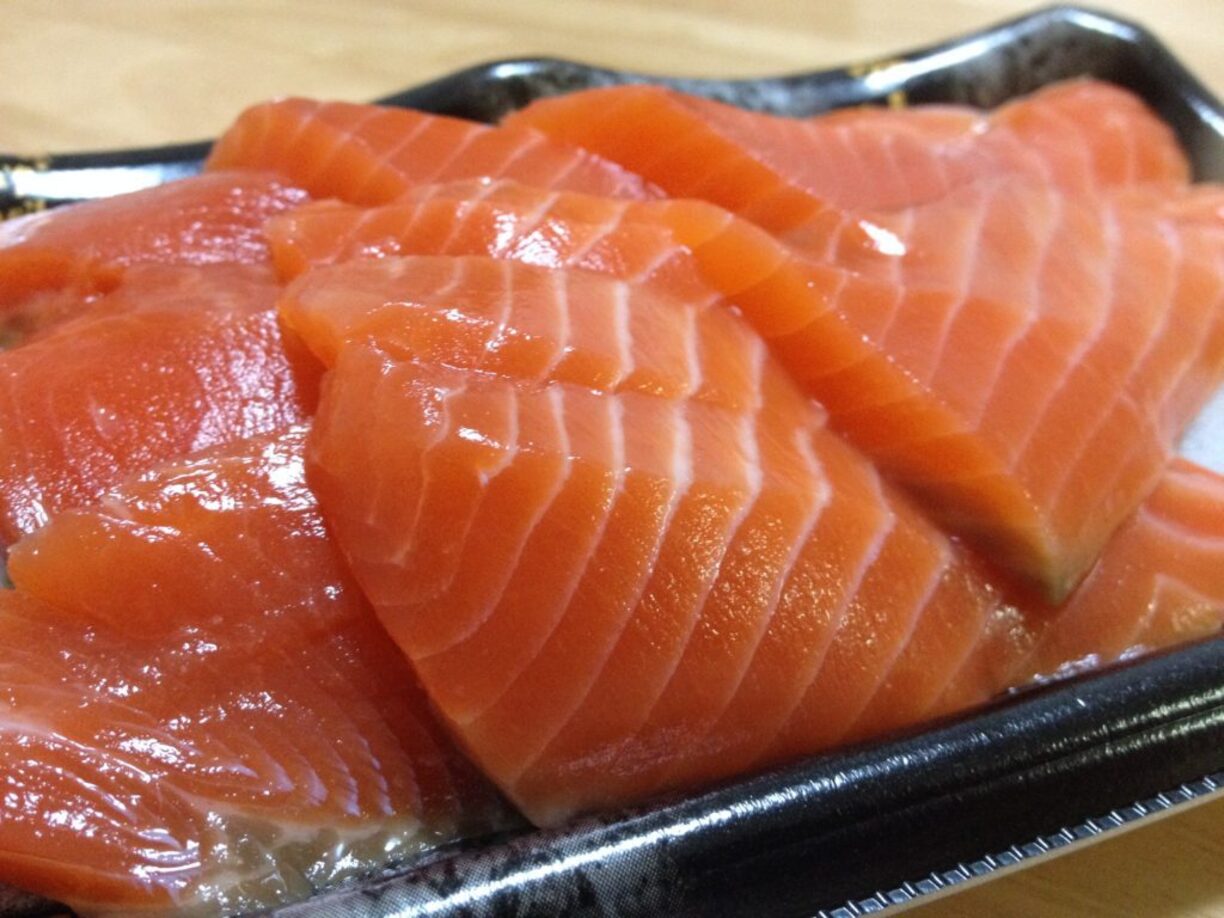
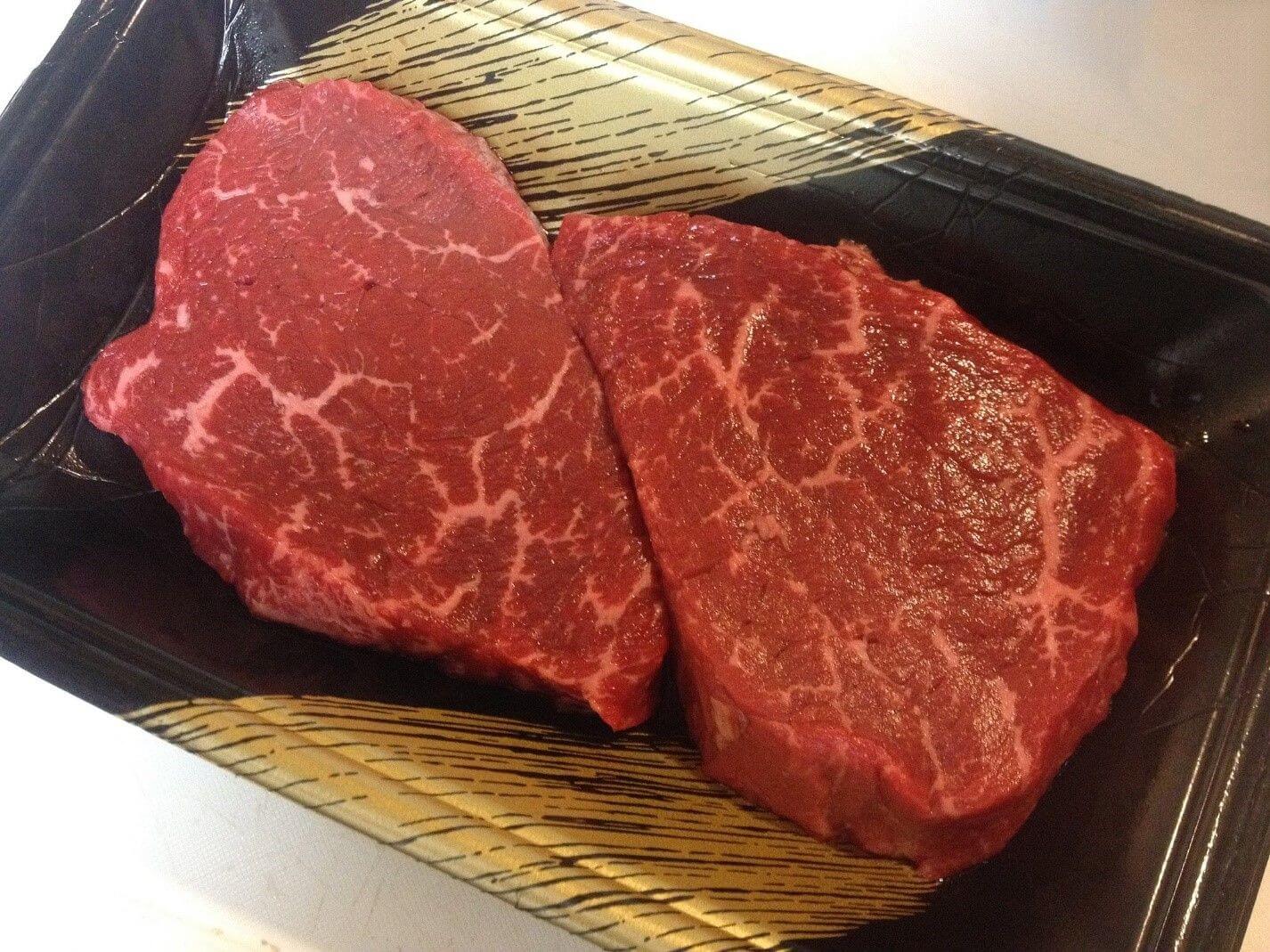
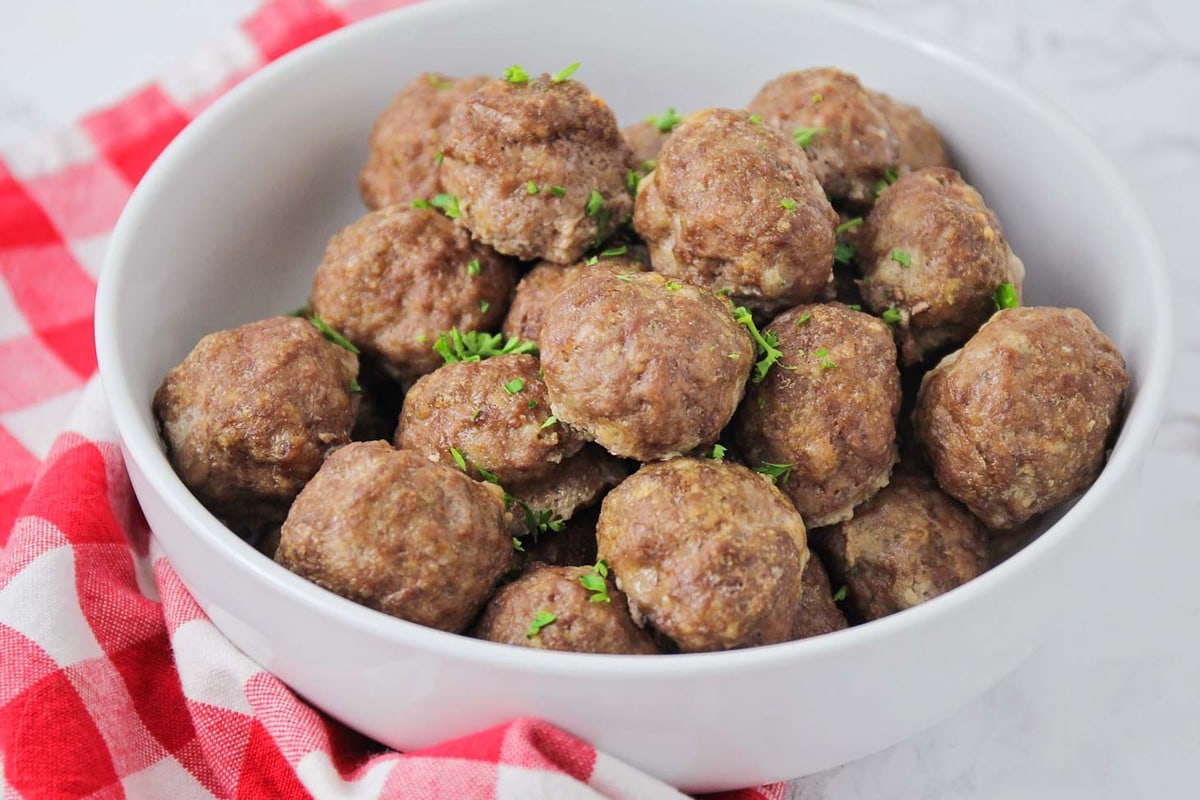
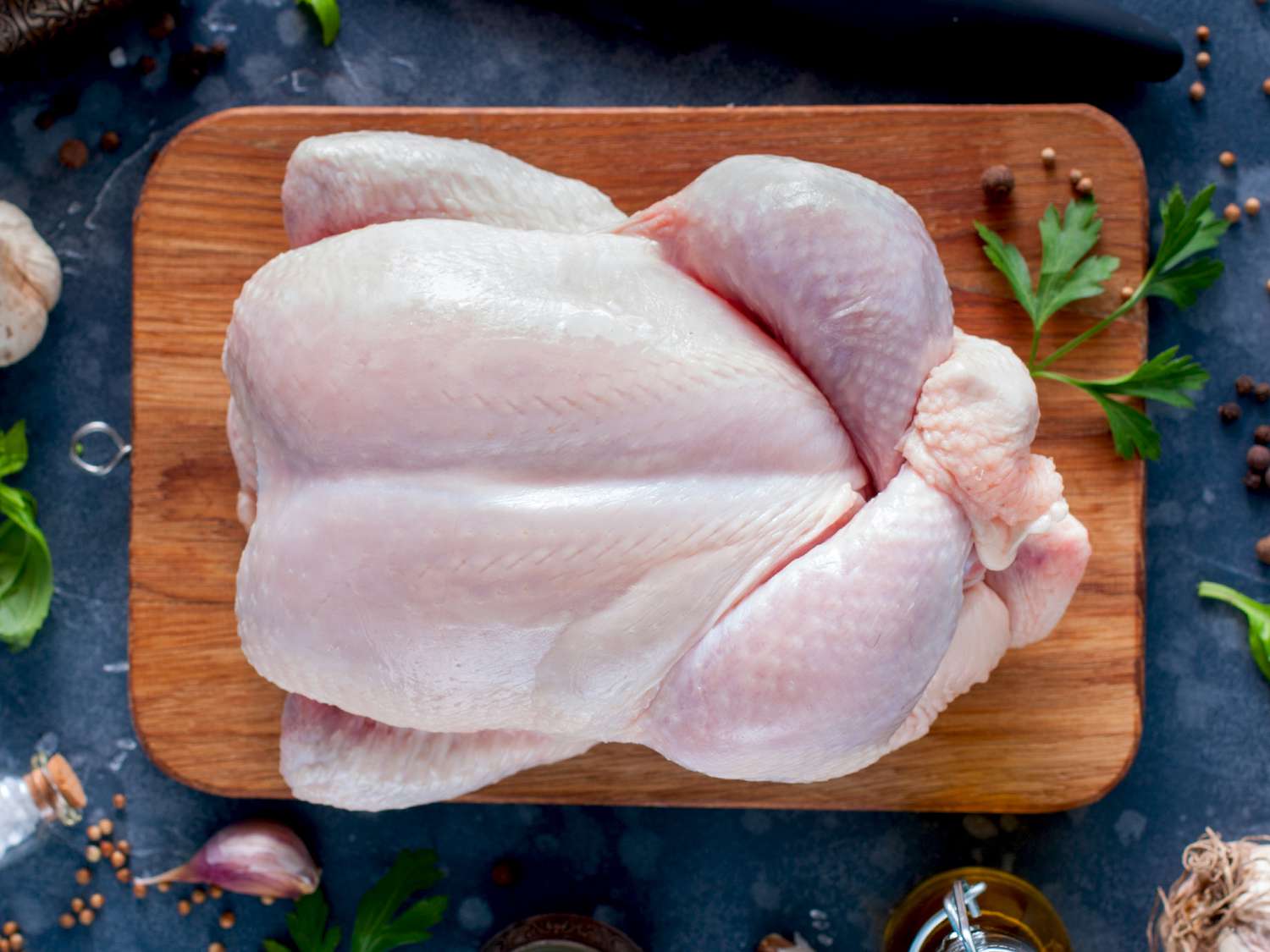
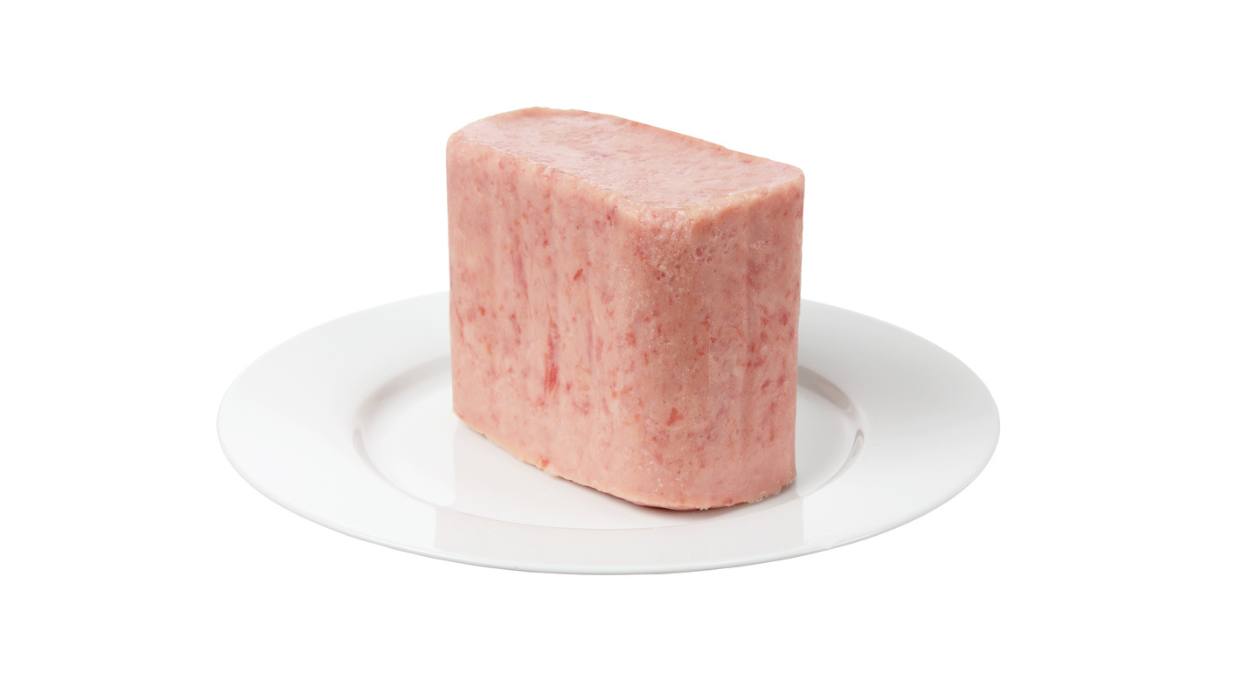

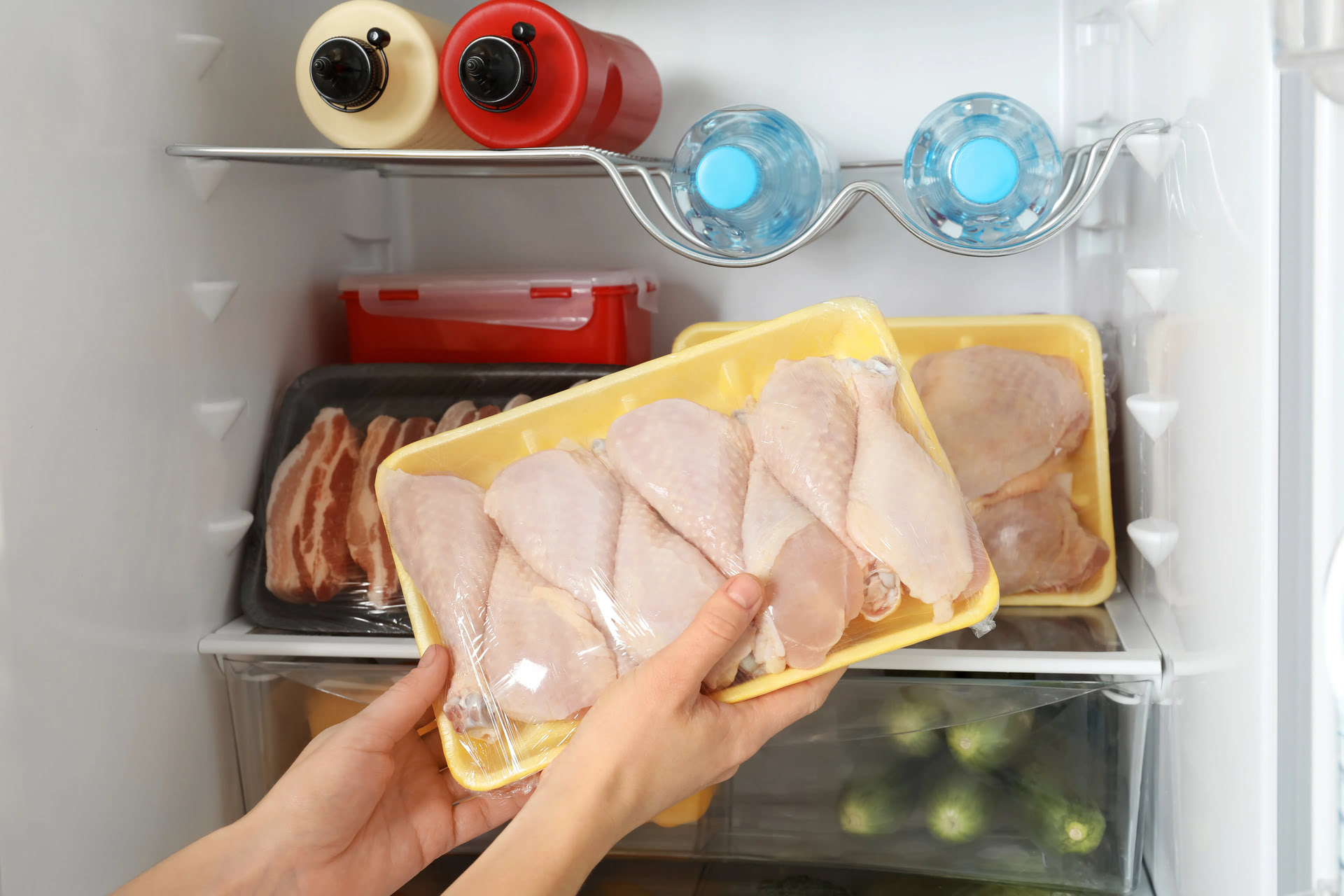
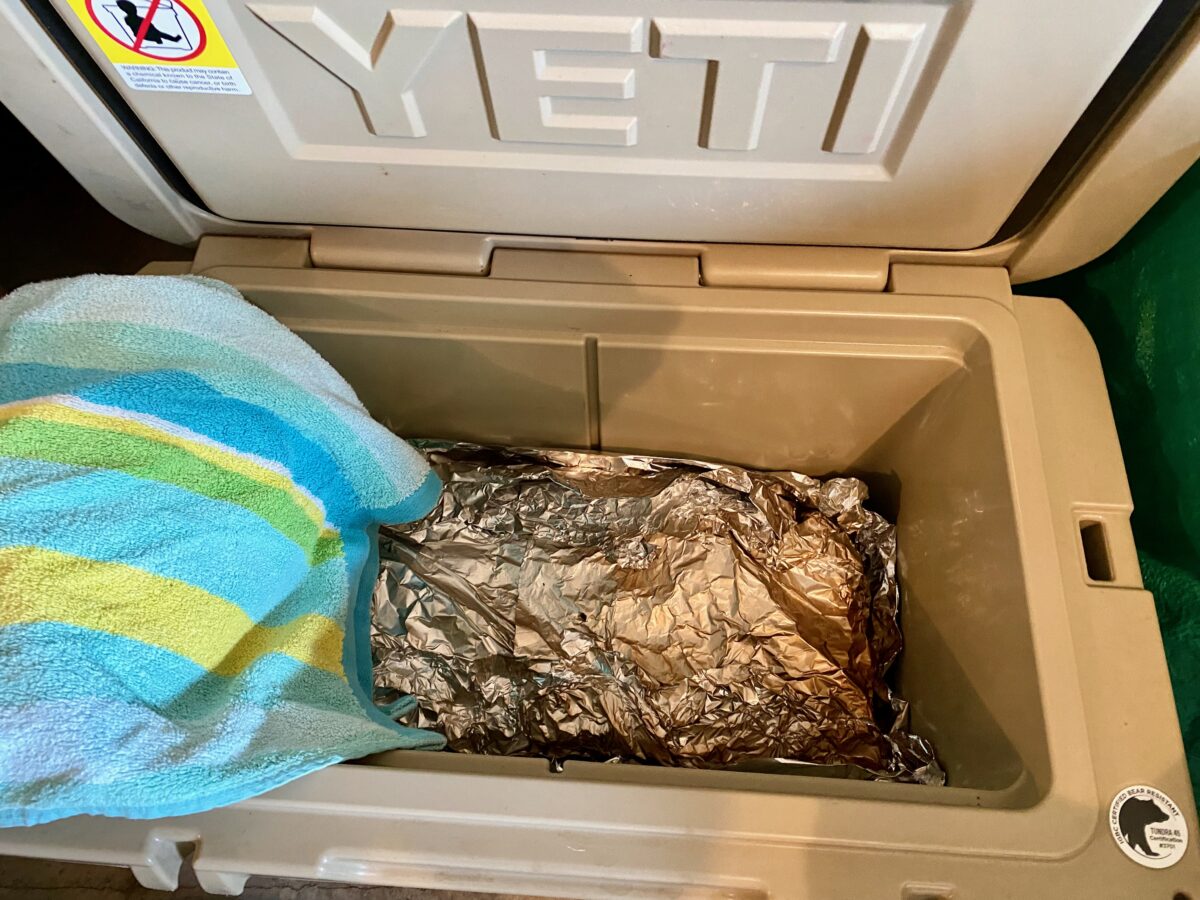
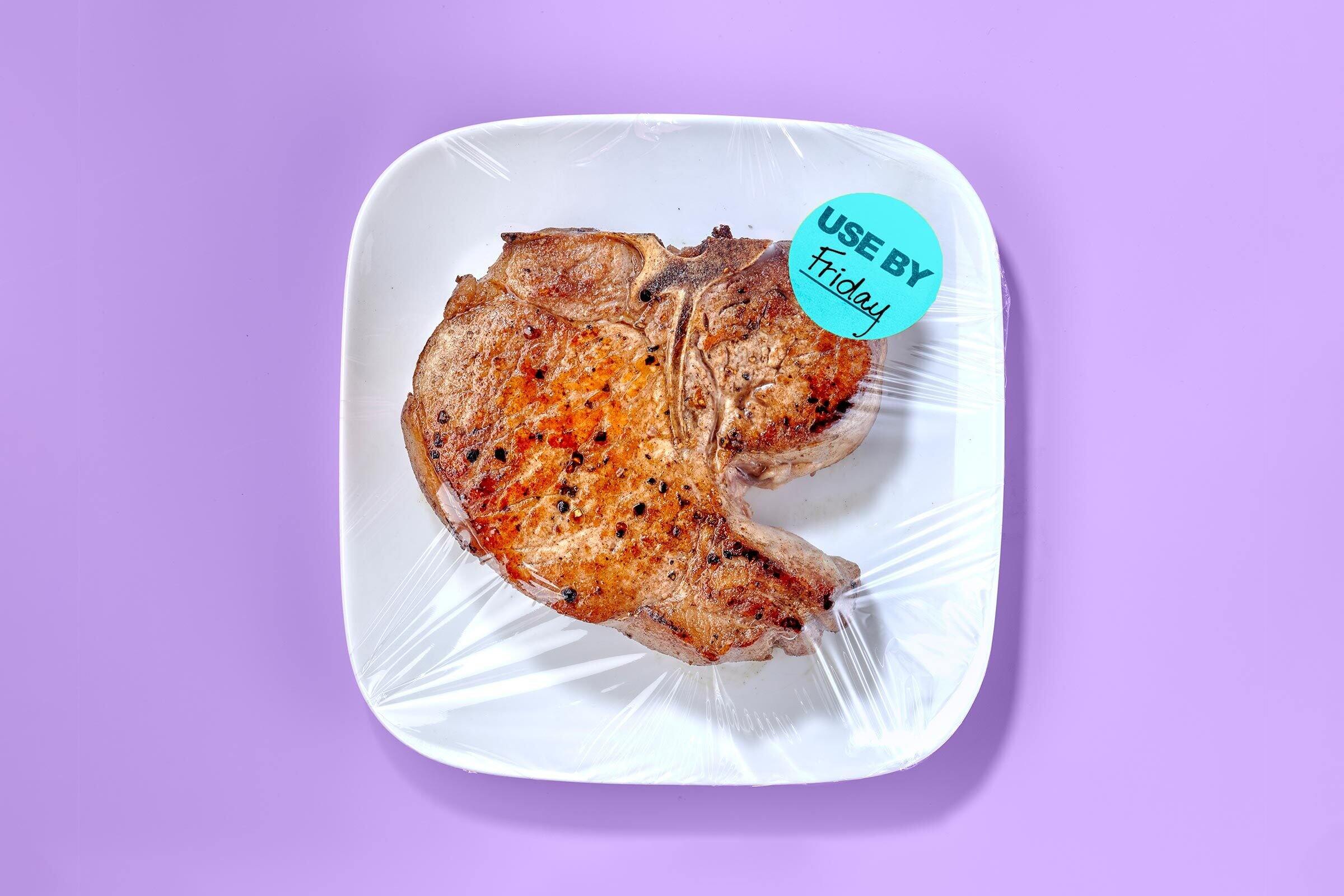
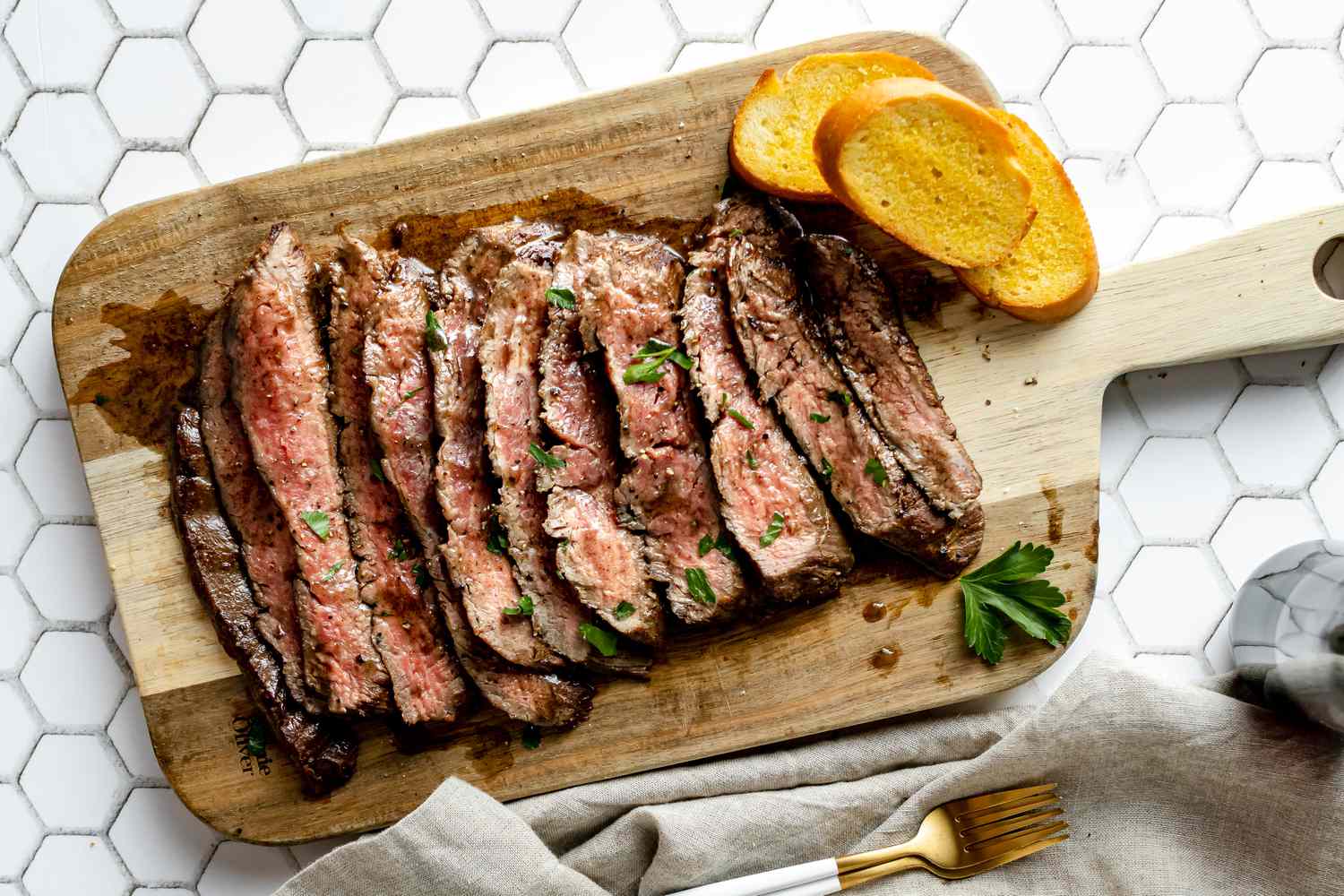
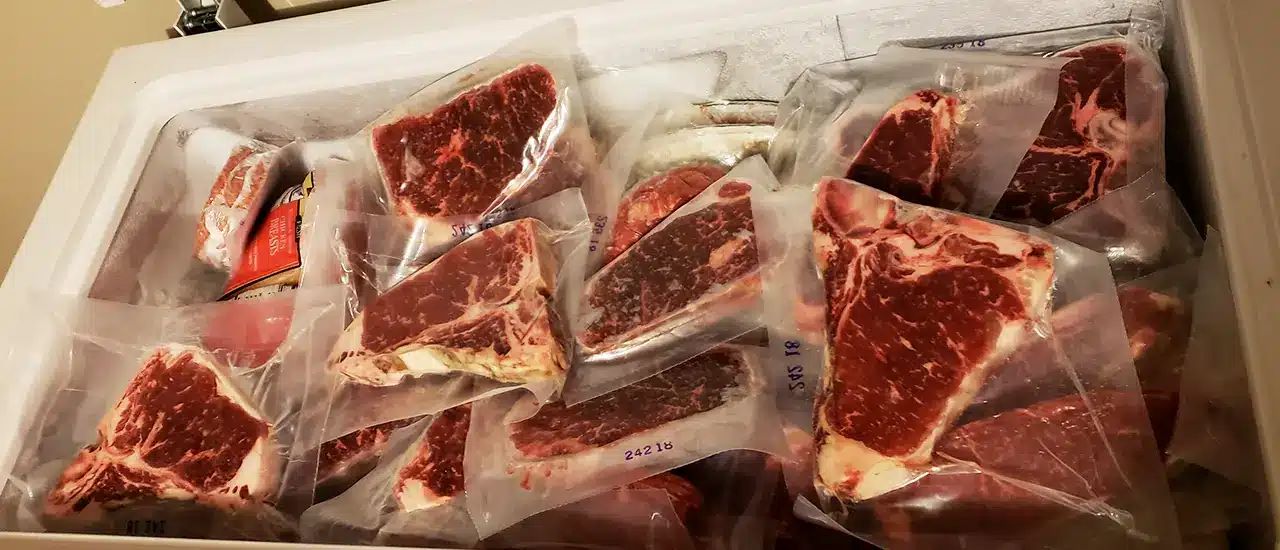

0 thoughts on “How To Store Meat”